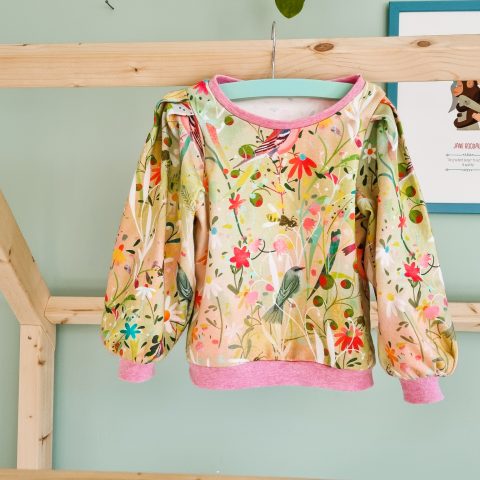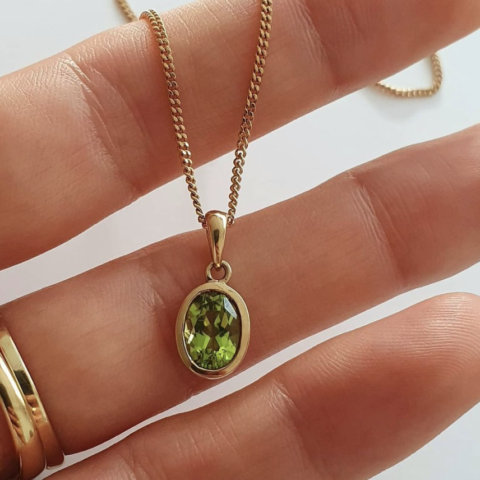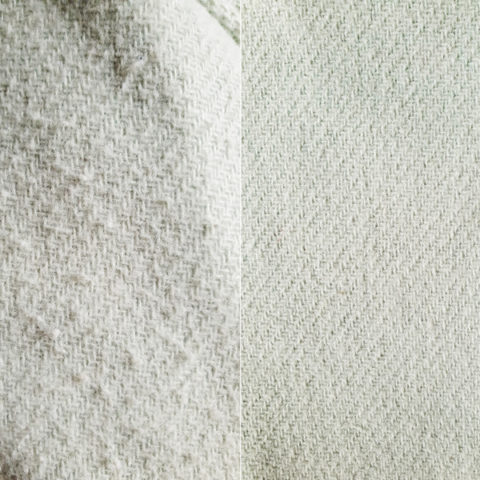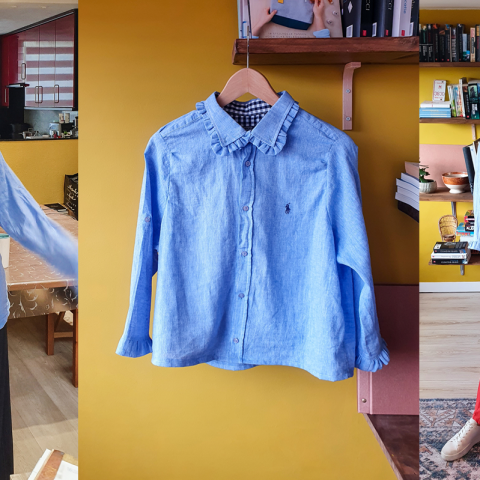Who hasn’t got some variant of Jamie in 15 minutes cooking book lying on the shelf? It’s an irresistible promise. Buy this book and your life is going to be better. From now on you’ll enjoy freshly cooked delicious meals within a fraction of the time it would normally take. We all want to believe there’s a quick magic solution that ends our life struggles. Forever. Thus, we ignore the obvious; Jamie has the ingredients and cutlery neatly layed out in his latest state-of-the-art kitchen long before time starts to tick. On top of that, the recipes are old news to him. Meaning every recipe will take you twice as long. For the average amateur cook there’s no short cut to good food.
The cooking preface is a somewhat elaborate way to explain the seductive pull H&M Conscious can have on consumers (like me) who are trying to make more sustainable purchases. It seems that without having to change your shopping habits, you can live up to the new sustainable morals of society, simply by switching to HM Conscious.
For those of you who are unfamiliar with the more sustainable line of H&M, this is what they count as Conscious:
'A product must contain at least 50% sustainable materials, such as organic cotton and recycled polyester — but many of our garments contain more than that. The only exception is recycled cotton, which can only make up 20% of a product due to quality restraints. We are, however, working with innovations to increase this share as soon as possible.'
Besides the year round Conscious line, twice a year H&M launches a Conscious Exclusive collection in which they incubate new materials and innovations that are eventually used in H&M’s main collections. Last year the Swedish multinational introduced three new fabrics: Hemp Biofibre™, made from oilseed hemp crop waste, Naia™ Renew, a cellulosic fibre sourced from circular content and Vegea™, a vegan leather made from grapes.
So far so good. These are plausible steps. It’s clear H&M is making movements towards being more sustainable, and as a huge company every small step they take is a significant one.
Eliminate waste by shopping?
But this is where it starts to become uncomfortable. On its website the fashion retailer states: “We want to eliminate waste and let material flow in circles. By shopping with us, you help turn ideas like these into reality.” Or another slogan: “The shortcut to sustainable choices? Shop Conscious.”
‘Conscious’ is sometimes confused with ‘conscience’, the first being deliberate and intentional and aware of your surroundings, the second referring to a person’s moral sense of right and wrong.
However, both terms leave no room for overstating your sustainability efforts. Shopping at H&M Conscious doesn’t eliminates waste, it adds waste. Most of their clothes consists of blended materials, they don’t break down easily, like this studded sweater that contains 52% polyester, 41% acrylic, 4% wool, 3% elastane.

This sweater will not flow in circular circles, it will probably end up in a landfill in an African country. This is not me being cynical. I want the short cut, the 15 minute magic, but there is no fast and easy patch to sooth our fashion conscience.
0,7 percent recycled materials
H&M is stating the opposite in their marketing campaigns. Take their recycling programme; they have one of the most established and widespread in-store recycling programs worldwide, with bins in many of its more than 4,200 stores worldwide. The Swedish fashion giant details what it does with donations in colourful ad campaigns featuring messages like, “Shred it into fibres and stitch into something new,” and “Let’s tear your jeans into pieces and make new jeans out of them.”
However, I:Collect — the company that handles the donations for H&M — says that only 35% of what’s collected is recycled at all.
Your donated clothes are, more often than not, being resold in countries like Kenya where they partly end up in second hand markets, and partly in landfills. Recycling clothes into other textiles is complicated and costly, especially with blended fabric. Of all of the material used by H&M to make its estimated half a billion garments a year, only 0.7 per cent is recycled material. (H&M Sustainability Report 2018)
Sustainable products sell faster
When you donate your unwanted clothes, shoes, sheets or even underwear, you receive a discount on your future purchase. H&M says “vouchers are a way to show old textiles have a great value,” and can help “change the mindset.” And it does. But in my case the voucher also encouraged me to buy more Conscious clothes thus adding more waste. It’s a clever marketing strategy to retain customers and boosting sales.

Research by the Stern Center for Sustainable Business, of New York University, found that products that were highlighted as ‘sustainable’ would sell much faster than products which were not. If these products are truly fair and sustainable, it’s a win-win situation.
However, this is not the case at H&M. It is why Norway’s consumer watchdog criticised the Swedish fashion giant in 2019 for misleading marketing of its “sustainable” Conscious collection. The Norwegian Consumer Authority said that the Swedish clothing retailer provides insufficient information about the sustainable nature of its “sustainable style” collection.
CA director, Elisabeth Lier Haugseth, warned consumers that they may be being misled by “greenwashing” statements featured in companies’ marketing strategies.
Labour conditions H&M Conscious
On top of the vague sustainability claims, not a word is repped about labour conditions in which their H&M Conscious clothes are manufactured. In my opinion social ethics should be included into a fashion line that calls itself conscious.
When you look into labour conditions at H&M Group in general, it receives an ‘It’s A Start’ rating on Good on You. It got a score of 71-80% in the Fashion Transparency Index, and it publishes detailed information about its supplier policies, audit, and remediation processes. But being transparant does not equalize better labour conditions. Almost none of H&M’s supply chain is certified by labour standards which ensure worker health and safety, living wages, or other labour rights.
Conclusion: how sustainable is H&M Conscious?
Companies are made up of humans. And no human is perfect, nor is it capable of achieving change overnight. Especially when you have to move a gigantic tanker that houses thousands of complicated production chains, stock holders and consumers who demand more sustainable and fair fashion, but are used to low prices. I truly believe H&M is putting a lot of effort and resources in altering its course towards democratizing sustainable and fair fashion. So I’ll cheer on every step in the right direction, instead of solely focusing on what the fashion giant doesn’t do. I think H&M Conscious can be a great alternative for people with a small budget and little time on their hands to roam Vinted or other second hand platforms and stores.

What bothers me is the way the brand boosts about its efforts and results, leaving out its shortcomings. Is it naive of me to ask for a more humble, detailed and honest assessment about where H&M Conscious currently stands? It’s the only way you can let consumers make a truly conscious fashion choice. Now, its marketing machine deceives consumers on the nature of its Conscious line, causing them to make an economic decision that they would not otherwise have made.
I think it’s morally wrong to tap into the uncomfortable guilt consumers deal with (righteously so) due to the growing consciousness about the true cost behind their lust for cheap on trend clothes, by making them believe H&M Conscious is the short cut towards guilt free shopping. There’s work to do: swapping, mending, thrifting, caring, and yes, taking a shop-stop once in a while. Telling customers fairy tales only slows down the change the fashion industry so badly needs.






